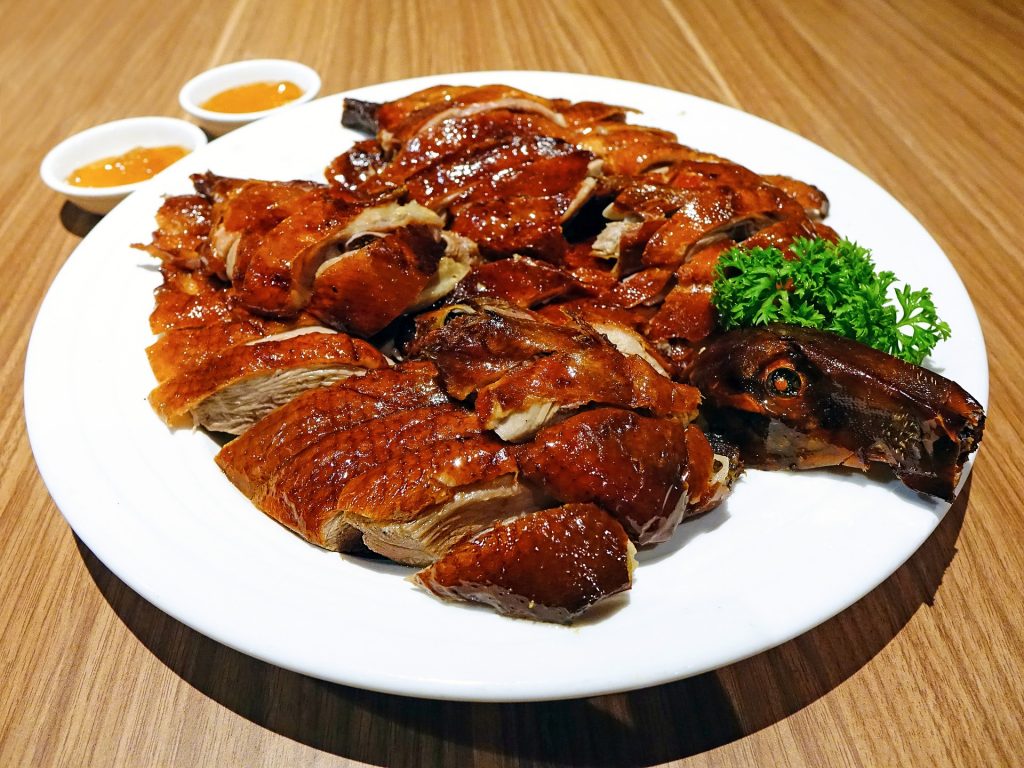China, a land known for its ancient traditions and rich history, offers a culinary landscape that is equally diverse and enticing. A journey through China is not complete without indulging in its exquisite cuisine. From the succulent Peking Duck to the fiery delights of Sichuan Hot Pot, this culinary odyssey promises a tantalizing exploration of flavors, traditions, and regional specialties.
Peking Duck: A Delicious Tradition
Peking Duck, also known as Beijing Duck, is a culinary gem that hails from the heart of China’s capital. The dish has a history that spans centuries and is revered for its crispy skin and tender meat. When you savor a slice of Peking Duck, you’re tasting a tradition that has delighted emperors and commoners alike.
Sichuan Cuisine: A Spicy Adventure
Sichuan cuisine is a culinary adventure that embraces bold and spicy flavors. The distinctive use of Sichuan peppercorns and chili peppers creates a unique, mouth-numbing sensation. Sichuan Hot Pot, a communal meal where ingredients are cooked in a simmering broth, is a quintessential part of this spicy culinary journey.
Dim Sum Delights: A Cantonese Tradition
Cantonese dim sum is a beloved tradition that combines the art of cooking with the art of serving. These small, flavorful dishes are meant to be shared, offering a delightful array of flavors and textures. From delicate dumplings to steamed buns, dim sum is a culinary expression of Cantonese hospitality.
Exploring Street Food: A Culinary Adventure
The vibrant street food culture in China is a reflection of the country’s diverse regional cuisines. As you walk through bustling markets and alleyways, you’ll encounter an array of tantalizing treats. From savory jianbing to sweet tanghulu, street food in China is an adventure for the senses.
The Art of Tea: Traditional Chinese Tea Culture
China’s rich tea culture has deep historical roots. It’s not just about sipping a beverage; it’s an art, a tradition, and a way of life. Whether you’re enjoying the elegance of a traditional tea ceremony or simply savoring a cup of your favorite tea, Chinese tea culture is an essential part of the culinary journey.
Regional Flavors: From Shanghai to Chengdu
China’s vast expanse is home to a diverse range of regional cuisines. From the delicate flavors of Shanghainese cuisine to the fiery dishes of Sichuan, each region has its own culinary signature. You’ll discover that China’s regional dishes are a reflection of its rich cultural tapestry.
A Fusion of Flavors: Modern Chinese Cuisine
In the modern era, Chinese cuisine has evolved to embrace global influences. Fusion dishes that blend traditional Chinese flavors with international ingredients have gained popularity. Modern Chinese cuisine is a reflection of a dynamic, multicultural society.
Culinary Etiquette: Navigating Chinese Dining
Chinese dining etiquette is steeped in tradition and respect. Understanding how to navigate a Chinese meal is not just a matter of courtesy; it’s an opportunity to connect with the culture. Learn the art of using chopsticks, the significance of tea pouring, and the importance of sharing dishes.
Conclusion: A Culinary Journey of Discovery
As we conclude this culinary journey, we’ve traversed the flavors, traditions, and stories of China’s culinary heritage. From the historical significance of Peking Duck to the sensory explosion of Sichuan Hot Pot, the culinary experiences in China are a feast for the senses. We encourage you to embark on your own culinary odyssey and discover the boundless treasures that China’s kitchens have to offer.
FAQs
What’s the best way to experience Peking Duck in Beijing?
- For an authentic Peking Duck experience, visit renowned restaurants like Quanjude or Da Dong in Beijing.
How spicy is Sichuan Hot Pot, and can it be adjusted to different spice levels?
- Sichuan Hot Pot can be extremely spicy, but you can request a milder version. The spice level can be adjusted to suit your preference.
What are some must-try street foods in China, and where can I find them?
- Popular street foods include jianbing (crepe), baozi (steamed buns), and stinky tofu. You can find these street foods in markets, food stalls, and street corners in various cities.
How is dim sum typically served in a Cantonese restaurant?
- Dim sum is served in small portions, with an assortment of dishes placed on the table. Diners choose dishes that appeal to them, and servers mark the dishes on a card to calculate the bill.
What are the key types of Chinese tea, and where can I learn about Chinese tea culture?
- Key Chinese teas include green tea, black tea, oolong tea, white tea, and pu-erh tea. You can learn about Chinese tea culture by visiting teahouses, taking tea tours, and participating in tea ceremonies.
